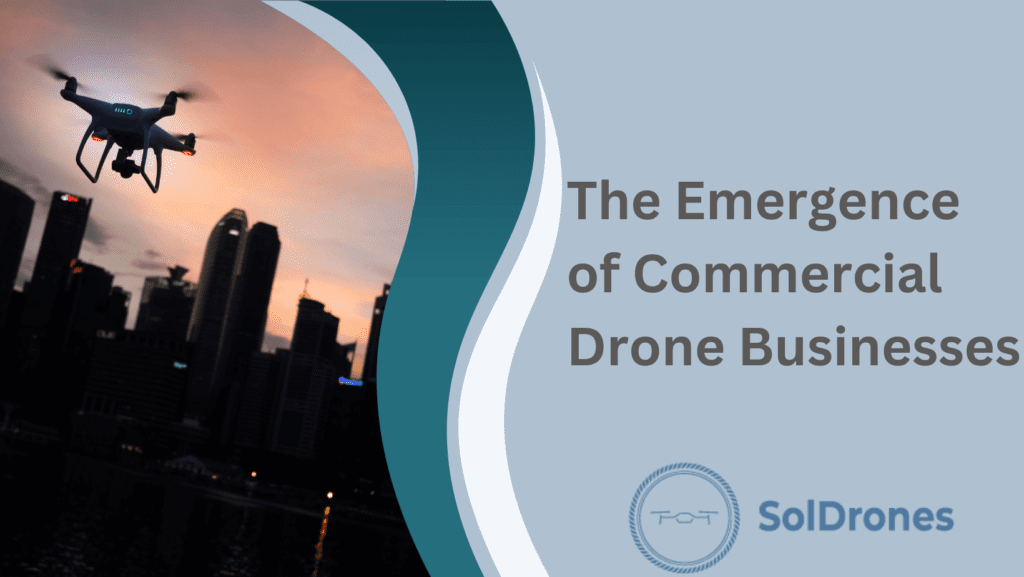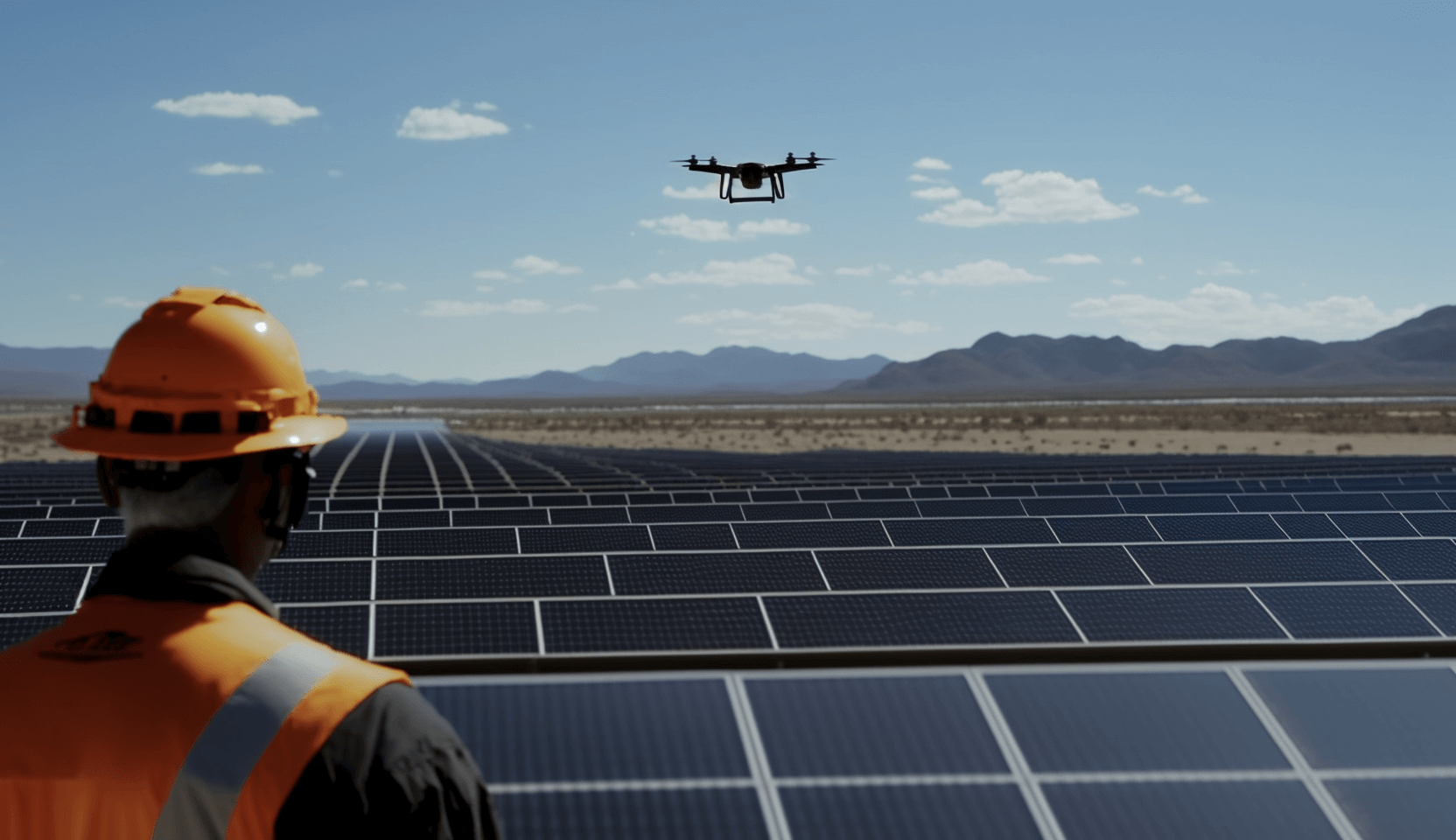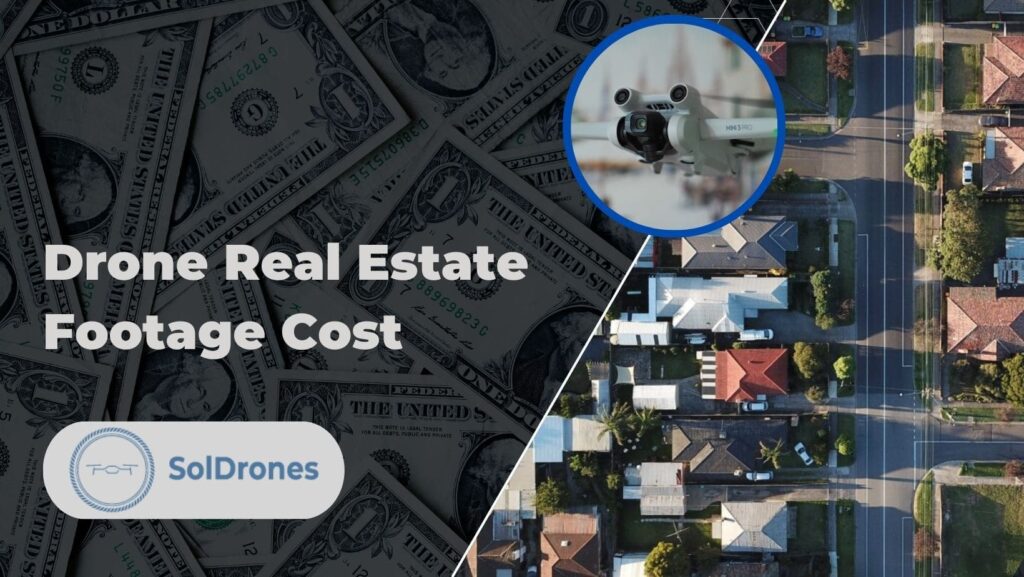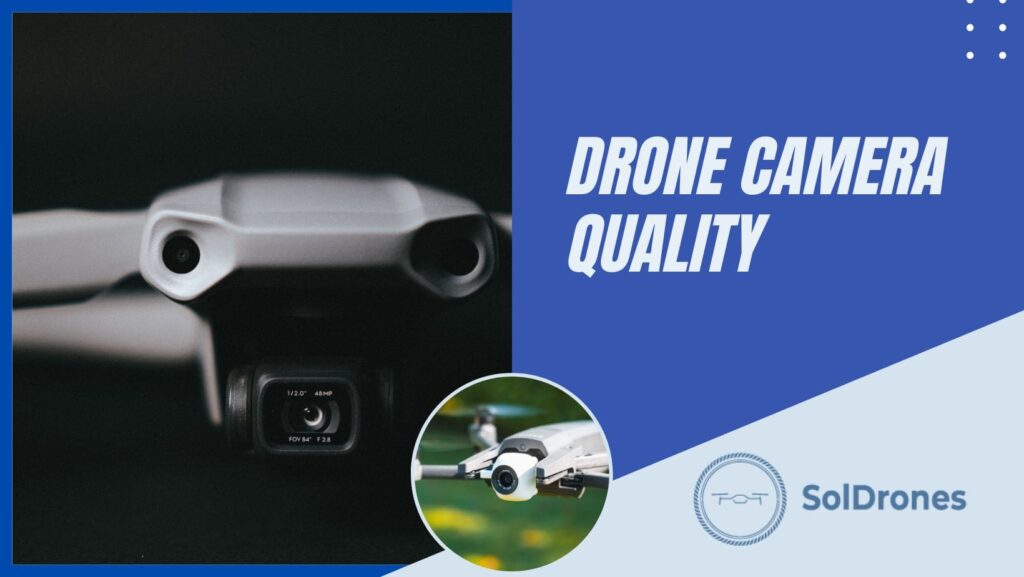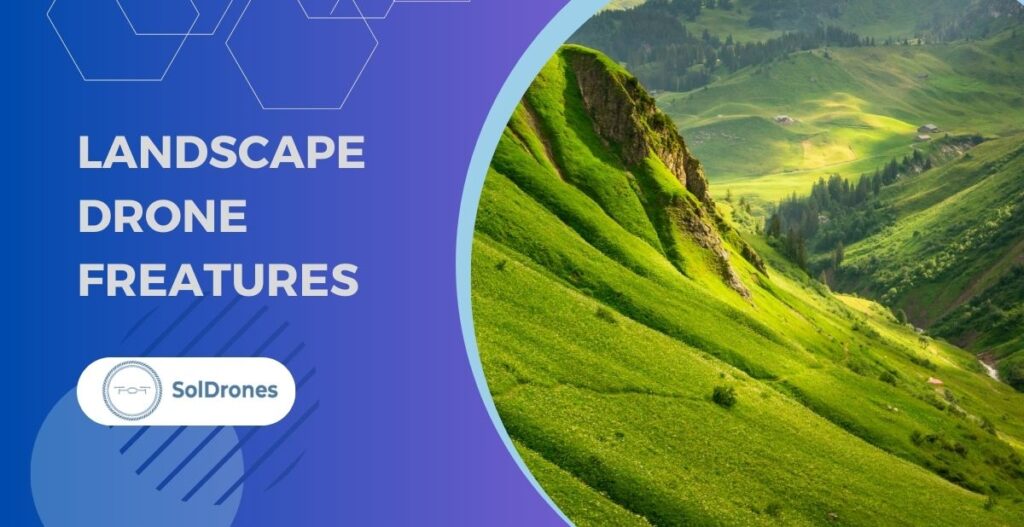As drone technology continues to advance, numerous commercial drone businesses are emerging throughout various industries. These unmanned aerial vehicles (UAVs) not only demonstrate the versatility of drones but also open up fresh possibilities for entrepreneurs and existing businesses.
In this article, we will explore several key industries that have seen rapid adoption of drone services, including construction, agriculture, roofing, mapping, advertising, search and rescue operations support, and traffic management solutions. By examining these potential ventures in detail, you’ll gain valuable insights into how to incorporate drone technology into your operations or inspire you to launch a successful enterprise centered around UAV technology.
Article Highlights:
- Top industries that are rapidly adopting drone services include construction, solar, search and rescue, and marketing
- Entrepreneurs starting commercial drone businesses are becoming lucrative if they’ll follow the right business plans
- You can make money with a drone if you have the right equipment, expertise, and understanding of your target industry
Aerial Inspection and Monitoring Services
One of the first major offerings drones provide is aerial inspection and monitoring services. Construction, agriculture, energy production, telecommunications, and other industries are becoming dependent on drones to inspect structures and monitor operations.
With the advancement of drone technology, traditional inspection and monitoring methods are slowly becoming outdated, as drones offer a more efficient and cost-effective approach. Drones equipped with high-resolution cameras and sensors can capture aerial imagery and provide real-time data, allowing businesses to quickly identify potential issues or delays before they become costly problems.
Drones equipped with high-resolution cameras and sensors can capture aerial imagery and provide real-time data, allowing businesses to quickly identify potential issues or delays before they become costly problems.
This technology is not only saving companies time and resources but also improving communication between teams by providing a clear visual representation of the project’s status.
If you’re currently working in an industry that would benefit from aerial inspection and monitoring, there’s a high chance that commercial drones are already supporting your industry or will be soon. Some of the most common industries benefiting from inspection and monitoring services provided by drone services are listed below.
Construction Site Progress Monitoring
Using drones for construction site progress monitoring allows project managers to track the development of their projects in real time. With aerial imagery captured by drones, stakeholders can quickly identify potential issues or delays before they become costly problems.
Additionally, this data helps improve communication between teams by providing a clear visual representation of the project’s status.
In the past, traditional methods of construction site progress monitoring relied on manual inspections and time-consuming reports. However, with the use of drones, project managers can now track the development of their projects in real-time and leverage spatial mapping, aerial photography, LIDAR data (Light Detection and Ranging), and other commercial drone pilot services.
The aerial imagery captured by drones provides a clear visual representation of the project’s status, allowing stakeholders to quickly identify potential issues or delays before they become costly problems. This technology has vastly improved communication between teams, reducing the likelihood of misunderstandings and improving overall project efficiency.
Agricultural Crop Health Analysis
Precision agriculture has come a long way with the integration of drone technology. The traditional methods of agriculture for monitoring crops involved manual observation, which was a time-consuming process with limited accuracy. However, drones have revolutionized the way farmers monitor their crops.
With high-resolution cameras and multispectral sensors on board, drones can provide a wealth of data on crop health indicators like chlorophyll content and water usage patterns, enabling agronomists to detect early signs of plant stress or disease more effectively. Additionally, the advantages of drones in agriculture extend beyond monitoring to include drone crop spraying, which helps with pesticide and herbicide application, and drone crop monitoring, which optimizes irrigation schedules while reducing overall management costs.
Solar Panel Inspections
Drones have also found use in inspecting solar panels at both residential and commercial sites. Aerial inspections allow technicians to spot any damage or inefficiencies that may be affecting power output without having to physically access each panel individually – saving time and resources while ensuring optimal performance levels are maintained throughout the system’s lifespan.
Some of the major benefits of using drones for solar panel inspections include:
- Increased Efficiency: Drone technology allows for quick and efficient inspections, reducing the time and resources required.
- Improved Quality and Volume of Data: Drone cameras can capture high-resolution images and data, providing a more detailed picture of the solar panels’ condition.
- Enhanced Safety: Drones can be flown at high altitudes, reducing the risk of falls and other hazards that traditional inspection methods present.
- Reduced Costs: Drone inspections require fewer resources, resulting in cost savings.
- Easy Storage, Tracking, and Distribution of Data: The data collected during drone inspections can be stored, tracked, and distributed with ease, making it easier for inspectors to analyze and act on the information.
Aerial Advertising & Marketing Campaigns
Drones offer an innovative platform for aerial advertising campaigns that capture the attention of potential customers. By utilizing drone technology, businesses can deliver their message through eye-catching banners or light displays at events or public spaces. Cost efficiency and a memorable impact are two of the key advantages that drones bring to advertising campaigns.
Aerial Banner Ads during Outdoor Events
One popular application of drones in advertising is flying banner ads during outdoor events such as concerts, sports games, and festivals. A drone carrying a large banner with your company’s logo or promotional message can easily grab the attention of attendees and create buzz around your brand. Additionally, this method reduces the need for traditional billboards or signage while offering greater flexibility in terms of location and timing.
Nighttime LED Light Shows Promoting Products/Services
Drones equipped with LED lights can be used to create stunning nighttime light shows that unforgettably promote products or services. Companies like Intel have already showcased the power of drone light shows, where hundreds of drones fly together to form mesmerizing patterns and shapes in the sky – all while displaying your brand’s message prominently before thousands of viewers.
- Product Launches: Dazzle audiences by unveiling new products using coordinated drone light shows as part of a launch event.
- Festivals & Concerts: Enhance live performances by incorporating custom-designed drone displays synchronized with music acts.
- Corporate Events: Impress clients and partners with a cutting-edge drone light show during your next corporate gathering.
Creative Marketing Stunts Using Drones
The sky’s the limit when it comes to creative marketing stunts using drones. Brands can think outside the box and come up with innovative ways to engage their target audience, such as delivering products via drones or organizing drone races sponsored by your company. For example, Domino’s Pizza successfully tested drone delivery, generating significant media coverage and interest from consumers.
Drones also offer innovative ways for businesses to advertise their products or services, such as aerial banner ads during outdoor events and nighttime LED light shows. Incorporating drones into advertising strategies not only captures attention but also demonstrates a forward-thinking brand that embraces technological advancements. Creative marketing stunts using drones can engage target audiences in unique ways, like delivering products via drones or organizing drone races sponsored by the company.
Search & Rescue (SAR) Operations Support
Drones, equipped with thermal imagery cameras, are essential in SAR operations due to their ability to quickly cover vast areas and provide live images back to rescue teams on the ground, thus enhancing response times and improving success rates. Equipped with thermal imagery cameras, they help locate people lost due to natural disasters or accidents. The implementation of this technology has considerably quickened response times and raised the likelihood of successful rescues.
Wilderness SAR Missions Support
In remote wilderness areas, drones can be an invaluable tool for locating missing hikers, climbers, or hunters who may have become disoriented or injured. With their ability to cover large distances rapidly and access hard-to-reach locations without putting human rescuers at risk, drones have become essential assets in these challenging missions. For example, organizations like DroneSAR are dedicated specifically to using drone technology for search and rescue purposes.
Urban Disaster Response Assistance
Drones also offer significant advantages when responding to urban disasters such as earthquakes, floods, or building collapses. By capturing real-time footage from above the affected area and sharing it with emergency responders on the ground immediately after a disaster occurs; this information helps them assess damage levels accurately and prioritize resources accordingly. The use of drones during events like Hurricane Harvey in 2017 demonstrated how valuable they can be in supporting relief efforts.
Missing Person Searches Coordination
Unmanned aerial vehicles are also highly beneficial when conducting missing person searches. A few use cases include:
- Wide-area coverage: Drones can cover large areas quickly, allowing search teams to coordinate their efforts more effectively and locate missing persons faster.
- Nighttime capabilities: Equipped with thermal imaging cameras, drones can detect heat signatures even in complete darkness, making them ideal for searching during nighttime hours when visibility is limited.
- Data sharing: Live video feeds from drone cameras can be shared instantly with multiple agencies involved in the search effort. This real-time information helps improve communication and decision-making among all parties involved.
Drones equipped with thermal imagery cameras have become essential assets in search and rescue operations, improving response times and success rates. They are particularly useful for locating missing persons in remote wilderness areas or urban disaster zones, as they can cover large distances quickly and access hard-to-reach locations without putting human rescuers at risk. Live video feeds from drone cameras also help improve communication among all parties involved in the search effort
Traffic Monitoring & Management Solutions
With the continuous increase in vehicles on our roads, traffic congestion has become a major concern for many cities. Drones offer an innovative solution to this problem by providing real-time data for better traffic monitoring and management. This information is valuable for city planners and transportation authorities seeking to optimize road networks or respond quickly to accidents.
Real-time Traffic Monitoring During Peak Hours
Drones equipped with high-resolution cameras can capture live footage of traffic flow, allowing operators to identify congestion points and make informed decisions about rerouting or adjusting signal timings. By monitoring traffic during peak hours, drones help reduce delays and improve overall efficiency.
Accident Scene Assessment Support
In the event of a vehicular accident, drones can provide immediate aerial coverage that helps emergency responders assess the situation more accurately. With their ability to fly over obstacles such as buildings or trees, drones can reach accident scenes faster than ground-based units. They also enable first responders to view potential hazards from a safe distance before arriving at the scene – ensuring both public safety and efficient response times. For example, police departments across the United States have started using drones to assist with car crash investigations.
Data Collection for Infrastructure Planning
- Road condition assessments: Drones equipped with sensors can quickly and accurately assess the condition of road surfaces, identifying areas in need of repair or maintenance. This data can be used to prioritize infrastructure projects and allocate resources more effectively.
- Bridge inspections: Inspecting bridges is a time-consuming and potentially dangerous task for human inspectors. Drones can perform these inspections safely while capturing high-resolution images that provide detailed information about the structure’s integrity.
- Traffic pattern analysis: By monitoring traffic flow over time, drones can help transportation planners identify trends and make data-driven decisions about future infrastructure improvements. For example, they might recommend adding lanes to a congested highway or adjusting signal timings at busy intersections.
Drones can be used for traffic monitoring and management solutions, providing real-time data to identify congestion points during peak hours and assist emergency responders in assessing accident scenes. They can also collect valuable data for infrastructure planning purposes, such as road condition assessments, bridge inspections, and traffic pattern analysis. As urban populations continue to grow, the use of drones offers an innovative solution to keep our cities moving efficiently.
Final Thoughts
In conclusion, the vast potential of drone technology in various industries is undeniable. From aerial inspections and monitoring services to traffic management, border security, and search and rescue operations, drones have revolutionized how we manage projects and respond to emergencies. With the continuous advancements in drone technology, the opportunities for innovation and growth in this field are limitless. It’s evident that drones are here to stay, and individuals and businesses alike have the opportunity to tap into the vast potential of this industry and make significant contributions.
Frequently Asked Questions Drone Business Ideas
Can I make money with a drone business?
Yes, you can make money with a drone business, and some drone businesses can be very lucrative. There are numerous applications for drones across various industries such as construction, agriculture, real estate, and marketing. By offering specialized services like aerial inspections, 3D modeling, or advertising campaigns, you can generate revenue from your drone operations.
How do I start a profitable drone business?
To start a profitable drone business, you’ll need to acquire the necessary certifications and licenses; invest in quality equipment; identify your target market and niche services; create an effective marketing strategy to promote your offerings; establish competitive pricing structures; and provide excellent customer service.
How do I write a drone business plan?
To write a successful drone business plan, start by defining your business goals, target market, and services offered. Research the industry, identify potential competitors, and determine your unique selling proposition. Determine the costs of starting and running your drone business, including equipment, insurance, and any necessary certifications or licenses. Develop a marketing strategy that includes online and offline advertising, networking, and building partnerships with related industries. Finally, create financial projections that outline your revenue and expenses, including a break-even analysis and long-term growth plans.

